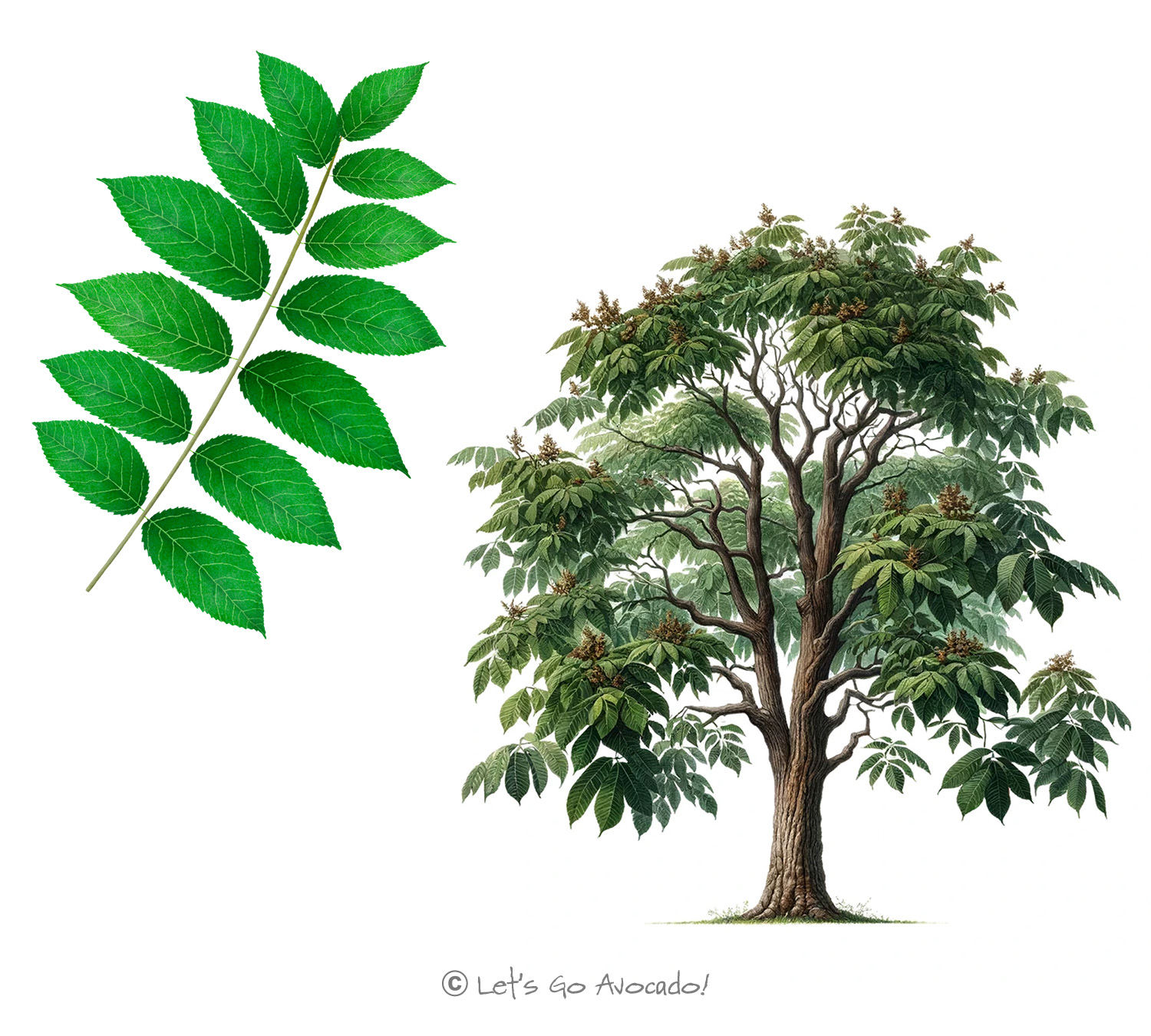The Black Walnut Tree: A Natural Marvel of the Forest
Welcome, young nature enthusiasts, to the intriguing world of the Black Walnut tree, scientifically known as Juglans nigra. This remarkable tree is not just a source of delicious nuts but also an important player in the ecosystemsAn ecosystem is a community of living organisms, like insects and birds, and non-living components, like water and rocks, that interact with each other in a specific area. Learn More where it thrives. Found predominantly in the eastern United States, the Black Walnut has a rich history and an array of fascinating characteristics that make it a standout in the forest. Let’s embark on a journey to learn about this amazing tree, from its unique features to its role in the environment.
Identifying the Black Walnut: Distinctive Traits
What makes the Black Walnut unique? Its leaves are large and composed of multiple leaflets, creating a lush, green canopy. In the fall, these leaves turn a bright yellow, creating a beautiful contrast with the tree’s rough, dark bark. The tree’s most famous feature is its round, green fruit, which contains the hard-shelled, flavorful walnut loved by many.
The Stature of the Black Walnut: A Sizeable Presence
The Black Walnut is a majestic tree, often reaching heights of 50-75 feet (15-23 meters), with some giants stretching even taller. Its spreading branches form a broad canopy, making it a prominent and imposing figure in the landscape.
The Life Cycle of a Walnut Tree
The Black Walnut’s life cycle is quite fascinating. In the spring, it produces male and female flowers, leading to the development of its signature walnuts by late summer. These nuts fall to the ground in autumn, potentially growing into new trees. The Black Walnut prefers deep, fertile soil and is often found in mixed hardwood forests.
Ecological Contributions: More Than a Nut-Bearing Tree
In its natural habitat, the Black Walnut plays a crucial role. It provides food for wildlife through its nuts and creates a habitat for various bird and insect species. Interestingly, the tree releases a chemical into the soil that inhibits the growth of certain plants around it, a phenomenon known as allelopathy.
Challenges and Survival Strategies
Despite its hardy nature, the Black Walnut faces threats from diseases like thousand cankers disease and pests such as the walnut husk fly. However, its natural defenses, including its chemical-producing abilities and robust structure, help it withstand various environmental stresses.
The Black Walnut in Human Life
The Black Walnut’s wood is highly valued for its strength, grain, and color, making it popular for furniture, cabinetry, and gunstocks. The nuts are not only tasty but also packed with nutrients, making them a favorite for culinary uses.
The Black Walnut tree is an impressive and important part of the forest. Its ability to provide food, its contribution to the ecosystem, and its value to humans make it a remarkable species. As we explore the forests and come across these magnificent trees, let’s appreciate the Black Walnut for all that it offers – from its shade to its nuts to its wood. Each Black Walnut tree is a living part of our natural heritage, playing a role in the environment and providing for the wildlife and people around it.
So, keep your eyes peeled and your minds curious. Each tree, each leaf has a story to tell. Happy exploring!










